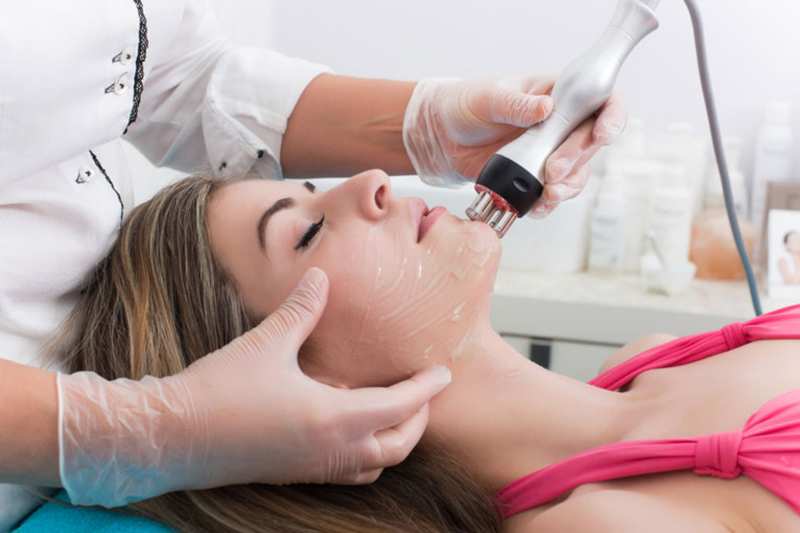
Say goodbye to blackheads & cystic acne by balancing hormones
Hormonal acne forms due to changes in the body’s hormone levels. Research shows that nearly 50% of women aged 13–25 (adolescence) and 25% of women aged 40–50 (perimenopause) experience this condition. While not life-threatening, hormonal acne can greatly affect self-confidence. So, what exactly is hormonal acne, what are its causes, symptoms, and how can it be treated effectively? Let’s explore below.
What is hormonal acne?
Hormonal acne is a type of acne triggered by hormonal fluctuations. It affects people of all ages but is most common during puberty, menstruation, pregnancy, and menopause. These phases involve hormonal imbalances that stimulate excess sebum production and clog pores, leading to acne breakouts.
The American Academy of Dermatology (AAD) estimates that about 50 million Americans suffer from acne at any given time, with hormonal acne being a significant proportion.
Characteristics of hormonal acne
- Teenagers often get acne in the T-zone (forehead, nose, chin).
- Adults usually develop acne on the lower face, jawline, and cheeks.
- Acne can appear as blackheads, whiteheads, cysts, or painful inflamed nodules.
- Acne often flares during puberty, menstruation, menopause, polycystic ovary syndrome (PCOS), or when androgen levels increase.
Hormonal fluctuations can worsen acne by causing overproduction of sebum, clogged pores, and bacterial growth, particularly Propionibacterium acnes.
Menopausal acne
Menopausal or perimenopausal acne is another form of hormonal acne. While teenage acne often appears in the T-zone, menopausal acne typically manifests as cysts, whiteheads, or nodules deep under the skin.
The condition may be triggered by declining estrogen or increased androgen (especially testosterone). Even women undergoing hormone replacement therapy (HRT) may experience acne due to progestins in some medications, which enlarge pores and encourage bacterial growth.

Causes of hormonal acne
There are four primary causes of acne, with hormonal imbalance being a major factor:
- Excess sebum production.
- Bacterial buildup and clogged pores.
- Inflammatory immune response.
- Dead skin cells blocking follicles.
Other contributing factors include PCOS, stress, poor diet, excessive skincare product use, and side effects of certain medications (like steroids).
Symptoms of hormonal acne
- Blackheads, whiteheads, pustules, cysts, and nodules.
- Mostly appears on the face, jawline, neck, back, or chest.
- May accompany menstrual irregularities or endocrine disorders like hyperandrogenism.
Treatments for hormonal acne
1. Natural approaches
- Green tea: contains antioxidants that reduce inflammation. You can drink a few cups daily or use skincare products with green tea extract.
- Essential oils: such as tea tree oil, known for antibacterial and soothing properties.
These remedies are safe, natural, and cause fewer side effects, though they work best for mild acne.
2. Medications
- Oral contraceptives: certain birth control pills containing ethinyl estradiol with drospirenone or norethindrone help balance hormones. Not suitable for women with a history of breast cancer, stroke, blood clots, or uncontrolled hypertension.
- Anti-androgen drugs: such as spironolactone, which lowers excess androgen levels.
- Topical retinoids: derived from vitamin A, available in creams or gels, effective for unclogging pores. Must be combined with sunscreen use.
Always consult a dermatologist before starting medication.

3. Advanced dermatological treatments
For severe, persistent acne, dermatologists may recommend:
- Fractional CO2 laser.
- IPL (intense pulsed light).
- Oxygen therapy or mesotherapy.
These treatments require professional supervision for safety and effectiveness.
Skin care tips for hormonal acne
External care
- Wash face max 2 times/day with gentle cleansers.
- Avoid harsh scrubbing or squeezing pimples.
- Choose non-comedogenic products.
- Keep bedding and towels clean.
- Use acne treatments with AHA, BHA, or benzoyl peroxide.
- Apply moisturizer and sunscreen daily.
Internal care
- Sleep 7–8 hours/day, avoid stress.
- Eat a balanced diet rich in zinc, vitamin C, B, E, and antioxidants.
- Avoid excessive sugar, spicy or greasy food, and alcohol.
- Drink 1.5–2 liters of water per day.
- Consider detox teas like green tea or artichoke tea.
Conclusion
Hormonal acne is common and often recurs during different life stages. While it’s not dangerous, it affects appearance and confidence. With proper hormonal acne treatment, including medical care, skincare, and lifestyle changes, you can manage symptoms effectively and restore healthy, clear skin.
- How to Treat and Care for Hemorrhoids in Japan - October 21, 2024
- Candida Yeast Infection: Causes, Symptoms & Treatment - October 21, 2024
- Post-COVID Fatigue: A Comprehensive Guide to Recovery - October 21, 2024
